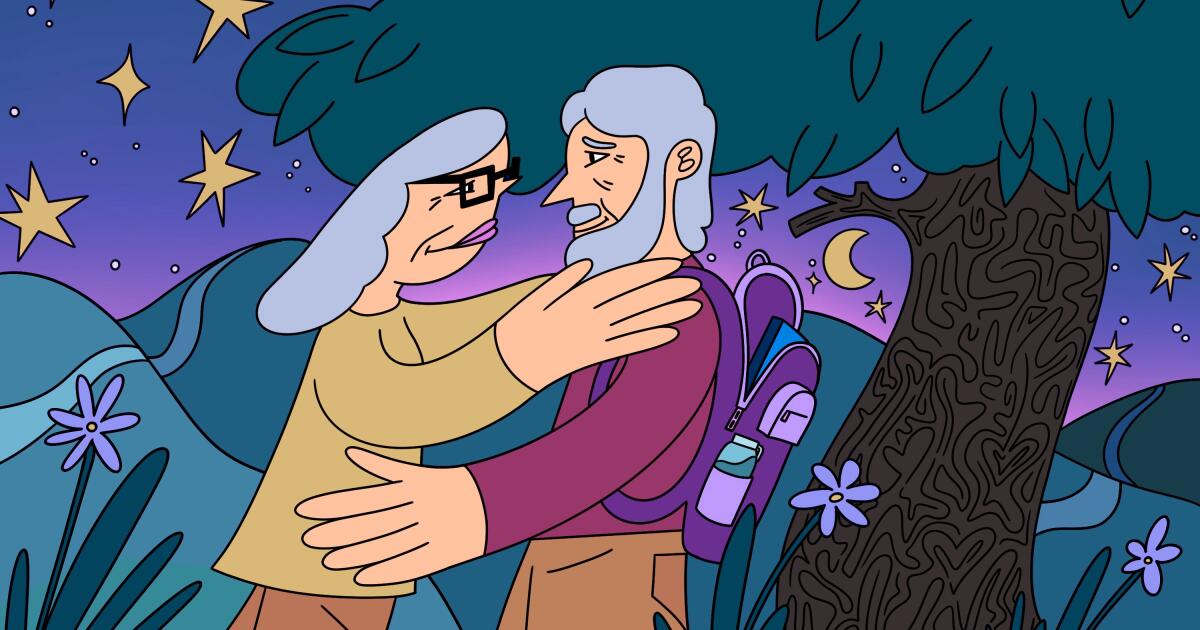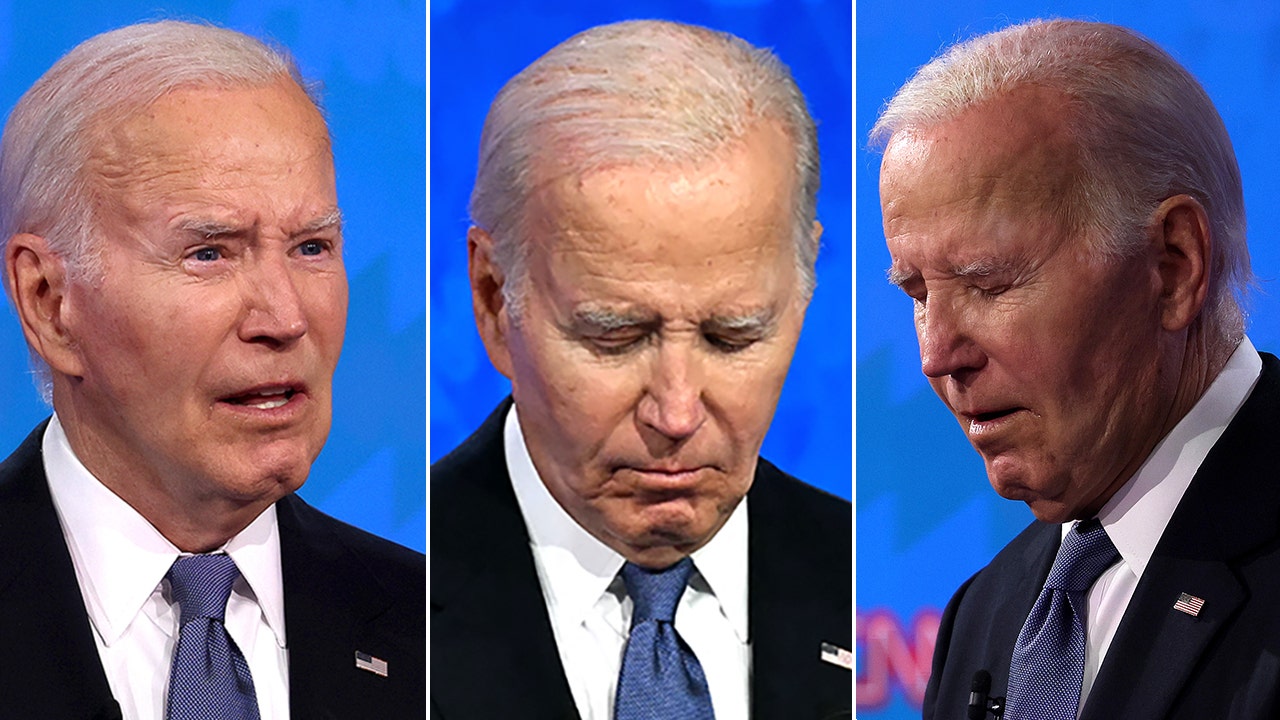Lifestyle
92NY, a historic cultural center, turns 150 — grappling with today's Israel-Hamas war

The 92nd Street Y, New York is celebrating its 150th anniversary. As a Jewish cultural institution, it’s also facing criticism related to the Israel-Hamas war.
92NY
hide caption
toggle caption
92NY

The 92nd Street Y, New York is celebrating its 150th anniversary. As a Jewish cultural institution, it’s also facing criticism related to the Israel-Hamas war.
92NY
Nonprofits often struggle to adhere to their original mission statements, especially as they develop new programs and serve new audiences. For Jewish institutions, the Israel-Hamas war has been an inflection point.
That’s been especially true of The 92nd Street Y, New York, which turns 150 this month.
92NY was founded by a group of German Jewish New Yorkers as one of the earliest branches of the Young Men’s Hebrew Association, which were modeled on the Young Men’s Christian Associations, better known as the YMCA.
It had a simple goal — help immigrants assimilate, said Seth Pinsky, CEO of 92NY.
“They saw a growing wave of Eastern European Jews and felt that these new immigrants would need a place where they could learn how to become Americans, become educated, gain skills, and adjust to a new life in a new country,” Pinsky said.

Swimming at New York’s Young Men’s Hebrew Association (YMHA) in 1911. The YMHA eventually became The 92nd Street Y, New York, a cultural force that hasn’t lost its community center vibe.
92NY
hide caption
toggle caption
92NY
Over time, The 92nd Street Y, New York became much more: a nondenominational, cultural powerhouse open to all. “Even though it was founded as a Jewish institution, has always been a Jewish institution, it is also an institution that has always served the wider world,” said Pinsky.
‘Category buster’
Look through the archives and it seems like anybody who’s anybody in culture, science, politics and the like has appeared at 92NY: writers such as Dylan Thomas and Nobel Peace Prize winner Elie Wiesel, entertainers like Paul Robeson and Carol Burnett, and scientists like Dr. Jane Goodall. Modern dance pioneers Martha Graham and José Limón taught at 92NY before founding their own companies. Alvin Ailey debuted his best known work, Revelations at 92NY in 1960.

Martha Graham was among the modern dance pioneers who taught at 92NY before founding her own company.
The 92nd Street Y, New York
hide caption
toggle caption
The 92nd Street Y, New York
Every day, thousands of people still use The 92nd Street Y, New York as their local community center. They come for its swimming pool, daycare, gym and numerous classes, from tap dancing to jewelry making.
They also come for events and lectures. Recent speakers include actor Emily Blunt and actor/singer Audra McDonald, former U.S. Rep Liz Cheney, and Ambassador Deborah Lipstadt, the U.S. Special Envoy to Combat and Monitor Antisemitism. During the pandemic, 92NY started streaming virtual presentations online, reaching millions of people around the world.
“It’s a category buster and there’s really nothing else like it anywhere,” said Pinsky.
Pinsky said 92NY was built on Jewish and American values including “debate and a robust exchange of ideas.” From Israeli prime ministers to civil rights activists, for decades it has thrived as a place for diverse programs and points of view.

Ambassador Deborah Lipstadt, U.S. Special Envoy to Monitor and Combat Antisemitism, spoke with Rabbi David Ingber, senior director at 92NY’s Bronfman Center for Jewish Life on Jan. 24, 2024.
Vladimir Kolesnikov/Michael Priest Photography/The 92nd Street Y, New York
hide caption
toggle caption
Vladimir Kolesnikov/Michael Priest Photography/The 92nd Street Y, New York
But that identity was shaken after the Hamas-led attacks on Israel on Oct. 7, 2023. Afterward, 92NY postponed an event by one of its divisions, the well-regarded Unterberg Poetry Center.
Pulitzer Prize-winning writer Viet Thanh Nguyen was scheduled to talk at 92NY two weeks after the attacks. But he was also one of hundreds of writers who’d signed an open letter in the London Review of Books condemning Israel’s occupation and calling for a ceasefire. The Israeli government says that a ceasefire could lead to further attacks.
Nguyen’s novels are about surviving war and trauma, but Pinsky said it was not the right time for him to appear at 92NY.
“It was during the traditional Jewish period of mourning, and it was about a week after the so-called Day of Rage, when Hamas called for the targeting not just of Israelis, but of Jews and Jewish institutions,” Pinsky said. “And so what we said was not that he couldn’t hold those opinions and not that he could never appear on our stage. But maybe that moment wasn’t the right moment.”

The Poetry Center’s director, Bernard Schwartz, refused to postpone and quickly arranged for the event to take place at a local bookstore instead.
Nguyen told the audience he believed he was canceled.
“Art is supposed to keep our minds and hearts open. So the greatest irony of all of this is that what could save us — or one of the things that could save us — art — has been silenced,” Nguyen said.
Writers, including playwright Tony Kushner, signed an open letter angry at 92NY’s decision. Some of those scheduled to speak last fall withdrew. Schwartz and the two other members of the Poetry Center’s staff resigned, effectively suspending the program.
“It sends a terrible message, because writers have to be able to express themselves,” said James Shapiro, an author and English professor at Columbia University. He’s been actively involved with 92NY for years, including teaching a class on Shakespeare. He said he’s so furious, he doesn’t plan to return.

“I’m a Zionist. I’m a supporter of the Y. I’m a defender of my community,” said Shapiro, “And when a group within that community is effectively making it worse by aligning it with a view that Jews censor writers who don’t line up with their beliefs, it sets a terrible example.”
Shapiro praised the work of the Poetry Center’s small staff and “the brave stand that they took in defense of free speech.”
Pinsky said he’s well aware there are people in the literary world “who are not happy with the decision we made.” He vowed to rebuild the Poetry Center. “We’re ready to do the work and we think our poetry program and literature program is an important one, and it’s one that we want to get back on its feet.”
Cultural institutions need to ‘reconsider everything we do’
92NY is just one of many cultural institutions getting heat for whatever they do — or don’t do — related to the Israel-Hamas war. The decisions they make could affect their funding, audiences and staff morale.

“The 92nd Street Y, like all Jewish institutions, but I think all institutions with conscience, have to think ‘How do we respond?’ ” said Susannah Heschel, chair of the Jewish Studies Program at Dartmouth College. “I think it means we have to reconsider everything we do. As a professor of Jewish Studies, what do I hope to achieve? And I’m not sure.”
CEO Pinsky said 92NY’s commitment to a “robust exchange of ideas” hasn’t changed. Since Oct. 7, it has featured conversations that have been both critical and supportive of the Israeli government.
Trying to make sense of difficult topics is one of the many reasons people go to 92NY. But they also come for concerts or to take a class or go for a swim. Pinsky said its mission to enrich individuals and create community is needed now “more than any time” in its 150-year history.
“The fabric of society is being pulled apart in so many different ways,” he said. “And bringing people together and making them feel connected is incredibly important. And that’s who we’ve always been and that’s who we continue to be.”
This story was edited for audio and digital platforms by Jennifer Vanasco.

Lifestyle
'Wait Wait' for July 27, 2024: With Not My Job guest Kathleen Hanna

Kathleen Hanna of The Julie Ruin performs onstage at the 2016 Panorama NYC Festival – Day 2 at Randall’s Island on July 23, 2016 in New York City. (Photo by Nicholas Hunt/Getty Images)
Nicholas Hunt/Getty Images/Getty Images North America
hide caption
toggle caption
Nicholas Hunt/Getty Images/Getty Images North America
This week’s show was recorded in Chicago with host Peter Sagal, judge and scorekeeper Bill Kurtis, Not My Job guest Kathleen Hanna and panelists Meredith Scardino, Peter Grosz, and Mo Rocca Click the audio link above to hear the whole show.
Who’s Bill This Time
Momala Takes Over; Assigned Seats Are Back; And The Heat Is On
The Olympic Torch Reporch
Our Summer Olympics Preview
Bluff The Listener
Our panelists tell three stories about someone committing an office faux pas, only one of which is true.
Not My Job: We quiz Bikini Kill’s Kathleen Hanna on Hanna-Barbera
Punk icon Kathleen Hanna plays our game called, “Kathleen Hanna Meet Hannah-Barbera.” Three questions about the animation studio.
Panel Questions
Hide Your Receipts; VR Meets ER; Avocado Apologies
Limericks
Bill Kurtis reads three news-related limericks: Situation Room Cocktails; Burrito Bird; Hopped Up Sharks
Lightning Fill In The Blank
All the news we couldn’t fit anywhere else
Predictions
Our panelists predict what will be the big story out of the Paris Olympic Games
Lifestyle
L.A. Affairs: At 77, I had a crush on my best friend’s widower. Did he feel the same way?

At 77, I had given up. After two failed marriages and years of unsuccessful dating, I accepted what seemed to be my fate: single for almost 40 years and single for however many remained. You don’t get it all, I told myself. I was grateful for family, friends and work. Life settled into what felt like order.
Until Ty.
As the husband of my best friend, he was no stranger, but he was usually peripheral. Then 10 years ago, my friend got lung cancer. I watched during visits, stunned at how nurturing Ty could be, taking care of her even though they had separated years before at her request.
After she died, Ty and I stayed in touch sporadically: a surprise sharing of his second granddaughter a year after we scattered my friend’s ashes, an invitation to the launch of my book a year later. Ty attended, hovering in the back, emerging after everyone left to attentively help load my car.
Two more years passed. During quiet moments, I remembered his sweetness. I also remembered his handsome face and long, tall body. Confused about what I wanted, I texted Ty, who’s an architect, under the guise of purchasing a tree for my backyard.
We spent an afternoon at the nursery, laughing, comparing options and agreeing on a final selection. When the tree arrived, I emailed a photo. He emailed a thank you.
Another three years passed, broken only by news of his third granddaughter and my memories of how good it felt to be with him. Alert to his attentiveness, but unsettled by both his remove and my growing interest, I risked reaching out again, this time about remodeling my garage.
Ty spent several hours at my house making measurements, checking the foundation and sharing pictures of his home in Topanga. His sketches for the garage arrived two weeks later via email.
I was grateful for his help but unsure over what sort of friendship we were developing, at least from his point of view. I, however, was clear. I wanted him to wrap his long arms around me, tell me sweet things and make me his.
Instead, I sent a gift card to a Topanga restaurant to thank him for his drawings.
“Maybe we should spend it together,” he texted.
We dined in the dusk of late summer. Our talk was easy. Discomfort lay in the unspoken. Anxious for clarity, I repeatedly let my hand linger near the candle flickering in the middle of our table. It remained untouched.
And that was as far as I was willing to go. I refused to be any more forward, having already compromised myself beyond my comfort level with what seemed, at least to me, embarrassingly transparent efforts to indicate my interest. Not making the first move was very important. If a man could not reach out, if he didn’t have the self-confidence to take the first step, he would not, I adamantly felt, be a good partner for me.
Two weeks later, Ty did email, suggesting an early evening hike in Tuna Canyon in Malibu. The setting was perfect. Sun sparkled off the ocean. A gentle breeze blew. We climbed uphill for sweeping coastal vistas and circled down to the shade of live oaks, touching only when he took my hand to steady me where the path was slippery. At the end of the trail, overlooking the juncture between the mountains and the sea, we stood opposite each other and talked animatedly for almost an hour, both of us reluctant to part.
Our conversation was engaging, but my inner dialogue was louder. When, I kept thinking, is this man going to suggest we continue the evening over dinner? We didn’t have to go out. We could eat at his house. It was 7 p.m., for God’s sake. Passing hikers even stopped to remark on our matching white hair and how well they thought we looked together. It was like a movie scene where the audience is yelling, “Kiss her, kiss her,” rooting for what they know is going to happen while the tension becomes almost unbearable. But bear it I did.
Each of us ate alone.
A few weeks later, at his suggestion, we were back at Tuna Canyon. This time Ty did invite me to end the evening at his house. Sitting close on his couch, but not too close, we drifted toward each other in the darkening room. His shoulder brushed mine reaching for his cup of coffee. My hip pressed his as I leaned in for my tea. Slowly, sharing wishes and hopes for our remaining years, we became shadows in the light of the moon. And in that darkness, in that illuminated space, he reached out.
This reticent man, this man who was so slow to move toward me, this sensitive man who hid himself behind layers so opaque I was unsure of his interest, released all that he had inside him.
“I wanted you,” Ty repeated again and again. “I was afraid of ruining things. You were her best friend. I didn’t want to lose your friendship.”
Our pent-up tension exploded.
Stunned and thrilled, I leaned into the space he opened.
Three years later, it is a space we continue to share: a place where neither of us has given up, a place where he wraps me in his long arms, a place we hold carefully against our diminishing days.
The author is the owner of a preschool in Venice as well as a psychotherapist, photographer and writer. Her first book, “Naked in the Woods: My Unexpected Years in a Hippie Commune,” was published in 2015. Her newest manuscript, “Bargains: A Coming of Aging Memoir Told in Tales,” is seeking a publisher. She lives in Mar Vista and can be found at margaretgrundstein.com, Instagram @margwla, Medium @margaretgrundstein and Substack @mgrundstein.
L.A. Affairs chronicles the search for romantic love in all its glorious expressions in the L.A. area, and we want to hear your true story. We pay $400 for a published essay. Email LAAffairs@latimes.com. You can find submission guidelines here. You can find past columns here.
Lifestyle
'Deadpool & Wolverine' is a self-cannibalizing slog

Ryan Reynolds stars as Deadpool and Hugh Jackman as Wolverine in an odd-couple action hero pairing.
Jay Maidment/20th Century Studios
hide caption
toggle caption
Jay Maidment/20th Century Studios
When Fox Studios released the first Deadpool movie back in 2016, it played like an irreverently funny antidote to our collective comic-book-movie fatigue. Wade Wilson, or Deadpool, was a foul-mouthed mercenary who obliterated his enemies and the fourth wall with the same gonzo energy.
Again and again, Deadpool turned to the camera and mocked the clichés of the superhero movie with such deadpan wit, you almost forgot you were watching a superhero movie. And Ryan Reynolds, Hollywood’s snarkiest leading man, might have been engineered in a lab to play this vulgar vigilante. I liked the movie well enough, though one was plenty; by the time Deadpool 2 rolled around in 2018, all that self-aware humor had started to seem awfully self-satisfied.
Now we have a third movie, Deadpool & Wolverine, which came about through some recent movie-industry machinations. When Disney bought Fox a few years ago, Deadpool, along with other mutant characters from the X-Men series, officially joined the franchise juggernaut known as the Marvel Cinematic Universe.
That puts the new movie in an almost interesting bind. It tries to poke fun at its tortured corporate parentage; one of the first things Deadpool says is “Marvel’s so stupid.” But now the movie also has to fit into the narrative parameters of the MCU. It tries to have it both ways: brand extension disguised as a satire of brand extension.

It’s also an odd-couple comedy, pairing Deadpool with the most famous of the X-Men: Logan, or Wolverine, the mutant with the unbreakable bones and the retractable metal claws, played as ever by a bulked-up Hugh Jackman.
The combo makes sense, and not just because both characters are Canadian. In earlier movies, Deadpool often made Wolverine the off-screen butt of his jokes. Both Deadpool and Wolverine are essentially immortal, their bodies capable of self-regenerating after being wounded. Both are tormented by past failures and are trying to redeem themselves. Onscreen, the two have a good, thorny chemistry, with Jackman’s brooding silences contrasting nicely with Reynolds’ mile-a-minute delivery.
I could tell you more about the story, but only at the risk of incurring the wrath of studio publicists who have asked critics not to discuss the plot or the movie’s many, many cameos. Let’s just say that the director Shawn Levy and his army of screenwriters bring the two leads together through various rifts in the multiverse. Yes, the multiverse, that ever-elastic comic-book conceit, with numerous Deadpools and Wolverines from various alternate realities popping up along the way.

I suppose it’s safe to mention that Matthew Macfadyen, lately of Succession, plays some kind of sinister multiverse bureaucrat, while Emma Corrin, of The Crown, plays a nasty villain in exile. It’s all thin, derivative stuff, and the script’s various wink-wink nods to other shows and movies, from Back to the Future to Furiosa to The Great British Bake Off, don’t make it feel much fresher. And Levy, who previously directed Reynolds in the sci-fi comedies Free Guy and The Adam Project, doesn’t have much feel for the splattery violence that is a staple of the Deadpool movies. There’s more tedium than excitement in the characters’ bone-crunching, crotch-stabbing killing sprees, complete with corn-syrupy geysers of blood.

For all its carnage, its strenuous meta-humor and an R-rated sensibility that tests the generally PG-13 confines of the MCU, Deadpool & Wolverine does strive for sincerity at times. Some of its cameos and plot turns are clearly designed to pay tribute to Fox’s X-Men films from the early 2000s.
As a longtime X-Men fan myself, I’m not entirely immune to the charms of this approach; there’s one casting choice, in particular, that made me smile, almost in spite of myself. It’s not enough to make the movie feel like less of a self-cannibalizing slog, though I suspect that many in the audience, who live for this kind of glib fan service, won’t mind. Say what you will about Marvel — I certainly have — but it isn’t nearly as stupid as Deadpool says it is.

-

 World1 week ago
World1 week agoOne dead after car crashes into restaurant in Paris
-

 Midwest1 week ago
Midwest1 week agoMichigan rep posts video response to Stephen Colbert's joke about his RNC speech: 'Touché'
-

 News1 week ago
News1 week agoVideo: Young Republicans on Why Their Party Isn’t Reaching Gen Z (And What They Can Do About It)
-

 Movie Reviews1 week ago
Movie Reviews1 week agoMovie Review: A new generation drives into the storm in rousing ‘Twisters’
-

 News1 week ago
News1 week agoIn Milwaukee, Black Voters Struggle to Find a Home With Either Party
-

 Politics1 week ago
Politics1 week agoFox News Politics: The Call is Coming from Inside the House
-

 News1 week ago
News1 week agoVideo: J.D. Vance Accepts Vice-Presidential Nomination
-

 World1 week ago
World1 week agoTrump to take RNC stage for first speech since assassination attempt















